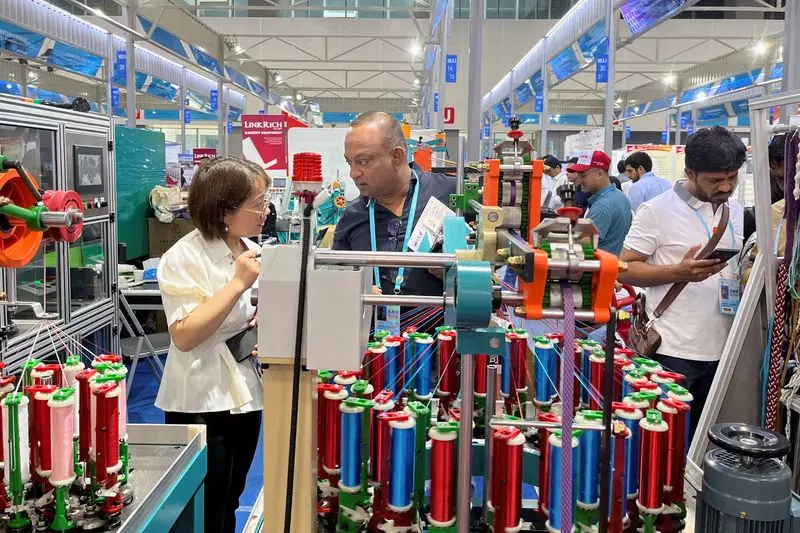The challenging times faced by Chinese exporters were evident at the Canton Fair in Guangzhou, where Wu Huazhan, a co-owner of a Chinese television factory, expressed the difficulties they were going through. The factory, which once imposed minimum orders to manage production efficiently, is now willing to accept any orders as profit margins have plummeted to a mere 0.5%. This significant drop from 2% just a few years ago has left many exporters like Wu worried about the future. Wu’s stark statement, “We’re selling electrical appliances as cheap as cabbage,” highlights the desperation felt by many in the industry. The looming threat of having to change careers if the situation persists for another year or two is a harsh reality for these struggling exporters.
The recent data showing that China’s economy grew at a faster-than-expected 5.3% in the first quarter did little to lift the sombre mood at the Canton Fair. The harsh reality of a sharp contraction in Chinese exports for March, despite growth in volumes, raises doubts about the country’s path to sustained post-pandemic growth. Economic and political tensions between Beijing and Washington, along with a slowdown in global trade due to external factors like the war in Ukraine and the Middle East crisis, have added to the challenges faced by Chinese exporters. The excess capacity in the manufacturing sector further exacerbates the predicament, making it even more difficult for exporters to navigate through these turbulent times.
The uncertainty in global markets is evident from the accounts of attendees at the Canton Fair. While the number of foreign buyers has increased, some expressed concerns about the sluggish nature of business interactions. Reports of fewer inquiries and declining orders from major markets like Europe and North America reflect the challenging environment faced by Chinese exporters. The reluctance of customers to place orders and the continued inventory run-down further add to the uncertainties surrounding future business prospects. The looming threat of trade tensions with the United States and Europe, regardless of the election outcome, only adds to the existing worries of exporters who are already struggling to stay afloat in a competitive landscape.
Amidst the gloomy outlook, there are pockets of optimism among higher-tech manufacturers at the fair. Companies like Guangdong Doni Intelligent Robot Engineering, which specialize in advanced technologies such as self-navigating machines for factory disinfection and parts distribution, have reported growth in the first quarter. Government support for the advanced manufacturing sector, including tax rebates and funds for equipment upgrades, has been instrumental in driving this growth. While these success stories provide a ray of hope for the industry, the overall challenges faced by Chinese exporters cannot be overlooked.
The harsh realities faced by Chinese exporters at the Canton Fair depict a challenging landscape marred by diminishing profit margins, economic uncertainties, and global market volatility. The need for resilience, innovation, and adaptability has never been more critical for these exporters to navigate through these turbulent times and carve a path towards sustainable growth. Only time will tell how the industry copes with these challenges and emerges stronger on the other side.

